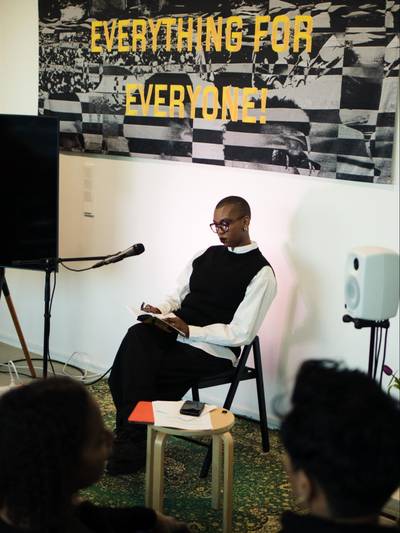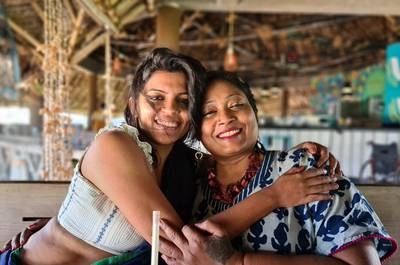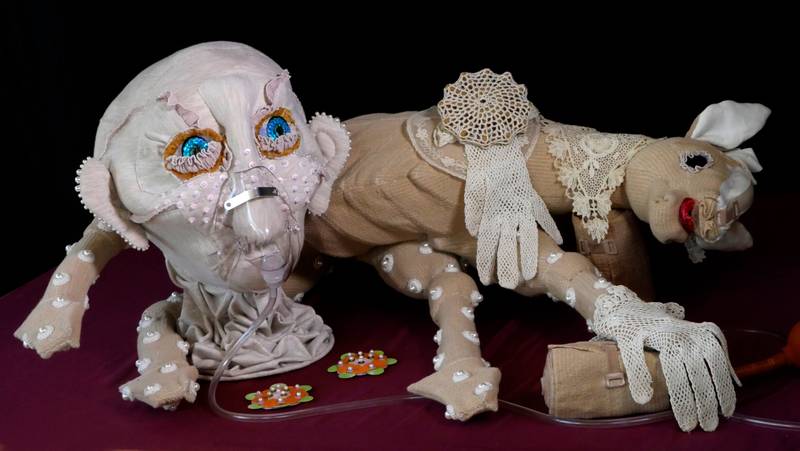

Iisa Lepistö is a Helsinki-based artist working with writing and sculptural objects. Her interests consist of the origins of sculptural materials and their possible futures, feminist theory and the combination of literary and sculptural expression. Alongside her individual artistic practice, she has worked as a set designer for performative arts. Lepistö graduated with a Master’s degree in Visual Arts from the Academy Of Fine Arts Helsinki in 2020. She has also studied at Taipei National University of Arts in Taiwan and École Supérieure d’art et de Design in Marseille, France.
Jenni-Juulia Wallinheimo-Heimonen is a Finnish Artist and activist born in 1974. Her long career as an artist covers films, sculptures, textile work, lectures and writing. The work deals with disability politics and the aesthetics of assisting devices.
We meet online using Zoom, as Jenni-Juulia is currently living and working at the Nordic Bridges residency, a year-long initiative led by Toronto’s Harbourfront Centre, fostering cultural exchange between the Nordic Region and Canada. “This is my first residency ever!” the artist says at the beginning of the discussion. “The facilities are really good here. This is a great example of how paying attention to accessibility in residency does not only mean that there is a wheelchair ramp to the place itself or that the house is built on a flat piece of land instead of a mountain. It also means that help and assistance are offered on-site. There is a person available in case I need help carrying things or moving my working tools, and there are good services for delivering food, groceries, and other everyday supplies in the city”.
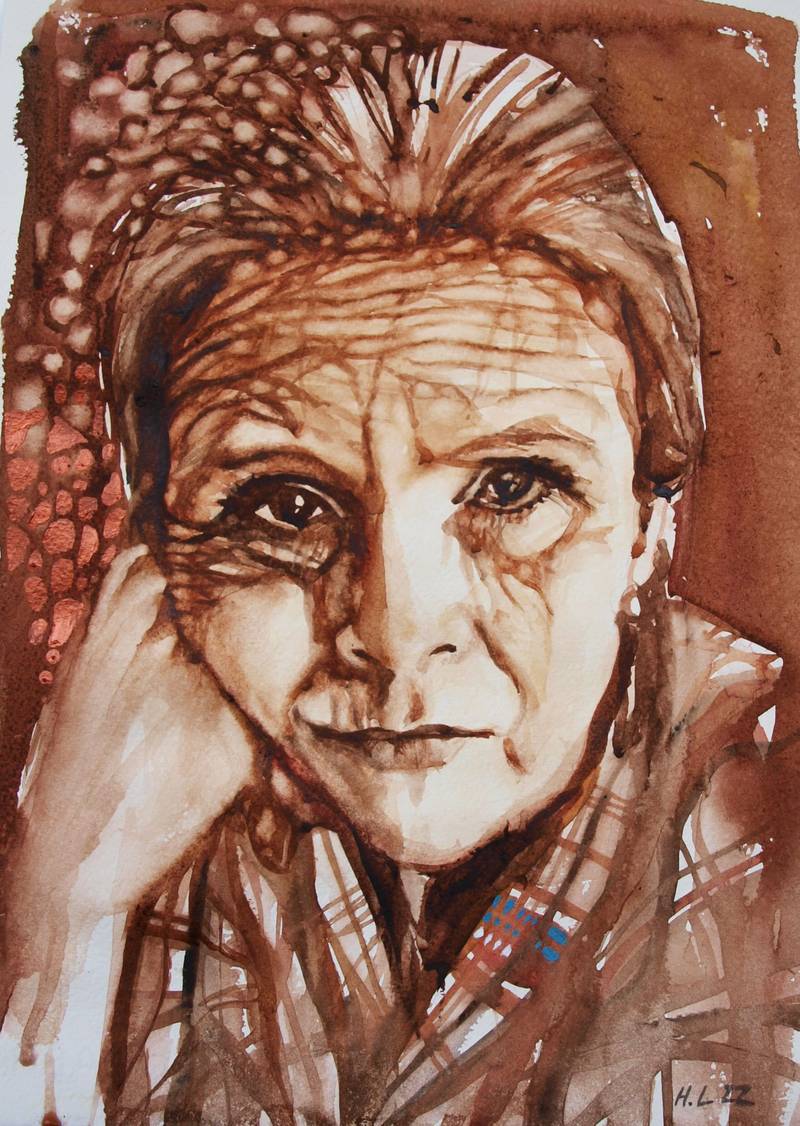

Portrait of Jenni-Juulia Wallinheimo-Heimonen by Hanna Moria Lindberg
Nordic Bridges has invited artists from different countries around the northern part of the globe, all the way from Greenland to Finland. Jenni-Juulia says that most of the artists in the project represent different sorts of minorities: “Sometimes in Finland, I feel like we artists with disabilities are chosen just to fill in quotas—to make the artist selection look diverse enough. Here it feels different. The diversity does not only mean the selected artists, but it reaches over to the working group, curators, etc. I also need to add that I am not specifically against quotas either. Those are necessary for change, but things can be done in many different ways”.
She adds: “And you know, there is a flip side to everything. The fact that the residency is well organised in terms of accessibility means that I am dependent on the platform economy, food and supply delivery services that are working long days with poor pay. Many factors make my independence possible, and it has an ethical contradiction”.
Our discussion starts with the notion of dichotomy, which remains involved in the themes of the discussion throughout the interview. Jenni-Juulia explains that there are no simple answers to the issues when it comes to the questions of disability politics. In a text titled “Rehearsing Hospitalities (Companion 3)”, published by Frame Contemporary Art Finland, the artist writes how "Accessibility is not static. Although there are numerous books and checklists on the subject, promoting ease of use, fluidity, and hospitality is an ever-changing lifestyle that needs to be updated repeatedly in different situations".
Jenni-Juulia explains how works that have been constructed with soft materials and sequins can steer people towards complex subjects: “I’ve always pointed out that in addition to physical, mental, and sexual violence, there is also a silent, structural violence that appears in the form of closing people out, not listening, slowing down the access to care, expressing frustration when people living with disabilities ask questions concerning them, bureaucracy, and so on”. Her works reveal societal structure flaws and remind viewers about our own positions and viewpoints, such as my position as a listener here. Her works, although soft, pretty and detailed in appearance, are demanding of criticality, conveying a strong voice of an activist and sharp humour. Our discussion quickly elaborated from specific artworks to more prominent themes around her work that can be seen as the ground of the artist’s works and activism.
IISA: I’m curious to know about your general observation of the art scene in Finland. How has it changed since you graduated and started your career?
JENNI-JUULIA: I graduated in 2002 from Aalto University (Design and Architecture, textile department). The following year was a good time because there was a relatively significant movement for getting more visibility for artists living with disabilities. But it was all too bold, and I got quickly tired from all the work. The point was just to get your works shown anywhere, but there was no sustainable structure for working behind it. Like all artists, I had to pay for the rent of the galleries but also do everything else by myself: marketing, making possible guided tours, making the space accessible, arranging the possible braille, audio description and sign language translations. There were lots of “our people” interested in the show, as there wasn’t much art visible from artists living with disabilities – so people were very interested in the exhibitions. I enjoyed it, but it was so much work. During that time, I also worked part-time at Kynnys Ry1 and gave courses to Invalidiliitto. It all swallowed time from my artistic practice.
A significant decision in my career was to abandon gallery-based work and pursue my own interests. I began creating pieces independently without telling anyone when I was supposed to complete them or where they would end up. I found creative ways of showing the works; I performed in public spaces or at different events, often filmed those and uploaded them online. I also started to tell other people’s stories, so the video was an excellent format for that, and it started almost accidentally. This was a tremendous professional change for me, and I have continued working that way more or less until now.
It feels like when it comes to accessibility, it is still possible to say we forgot about it or we did not have funding for it. I am very much aware that the arrangements for accessible spaces can swallow lots of money, and we should find better solutions for organising them. Sometimes I think there should be an organisation or a company in charge of ensuring accessibility for various cultural events. Organisations and institutions could buy the service from them, and the price should be minimal, free, or charged for individual artists. In the best-case scenario, this arrangement would be part of every exhibition or event from the organisation’s side and be included in working grants.
Have the facilities around accessibility changed at all since that?
Yes, and no. People often don’t understand how young the laws around accessibility are. The accessibility laws in land use and construction (buildings, architecture) were made first in 1999 and later refined on different points between 2000 and 2020. It feels like we are always left behind, forgotten about. If I am completely honest, I have to say I am very frustrated and a little bitter about how the concept of safe space often turns out. A space safe for everyone else is often not safe for us. To begin with, we do not usually get in, or there is no information about accessibility, no interpretation, or no other people with disabilities present in the events or space. All this makes it impossible to complain or give feedback about the lack of safety, so the so-called safe space does not fulfil its purpose.
It feels like when it comes to accessibility, it is still possible to say we forgot about it or we did not have funding for it. I am very much aware that the arrangements for accessible spaces can swallow lots of money, and we should find better solutions for organising them. Sometimes I think there should be an organisation or a company in charge of ensuring accessibility for various cultural events. Organisations and institutions could buy the service from them, and the price should be minimal, free, or charged for individual artists. In the best-case scenario, this arrangement would be part of every exhibition or event from the organisation’s side and be included in working grants. The company could borrow equipment but also offer an accessible platform for making audio descriptions, braille or sign language that would be easily approachable to users. It could be done in cooperation with disability organisations (who have the knowledge of the needs) and some companies that have the funding.
You have been working with the themes of care and class for years. Now that there has been a strong presence of care as a theme in the field of art during the past few years – how do you see it? Has it somehow affected the working conditions for artists and/or audiences living with disabilities?
Oh, this is such an emotional topic! To be completely honest, I have been following the topic of care for the past few years now, and I have to say that all the talk about it feels like a fraud against people living with disabilities. The Covid-19 pandemic revealed how little society cares about us and how the trust built during the past years collapsed in days. I genuinely appreciate the work of nurses and other healthcare workers, and I point out that my critique is not directed at them – but during the pandemic, it was clear that nobody was interested in our conditions. Before the pandemic, there was a connection between the decision-making levels in healthcare and disability organisations, but that connection broke down when the pandemic started. Even though there was an idea about how we get vaccinated and protect ourselves to protect the weakest, the idea did not succeed. To give a few examples, the personal caregivers did not get the vaccinations in the first bunch. In the beginning, people living with disabilities did not get vaccinations if they weren’t elderly. Communication was not working, and people were locked in without understanding why2 3 . In the beginning we had the energy to be loud and defend ourselves, but slowly it fell silent. Care was completely teared down for us when the pandemic started.
The former Chairperson and Executive Director of Kynnys Ry (The Threshold Association) Kalle Könkkölä always pointed out how people with disabilities are left out immediately during times of crises. Even as an activist working with disability politics I could not believe it would really happen, not here, not in Finland. It was one of those things you imagine happen elsewhere, in wars and floods. Due to the report4 made by the European Disability Forum not one of the multiple disability associations around Europe were heard in the decision making during the pandemic. So the idea about not making a decision considering us without us did not fulfil, we were not heard.
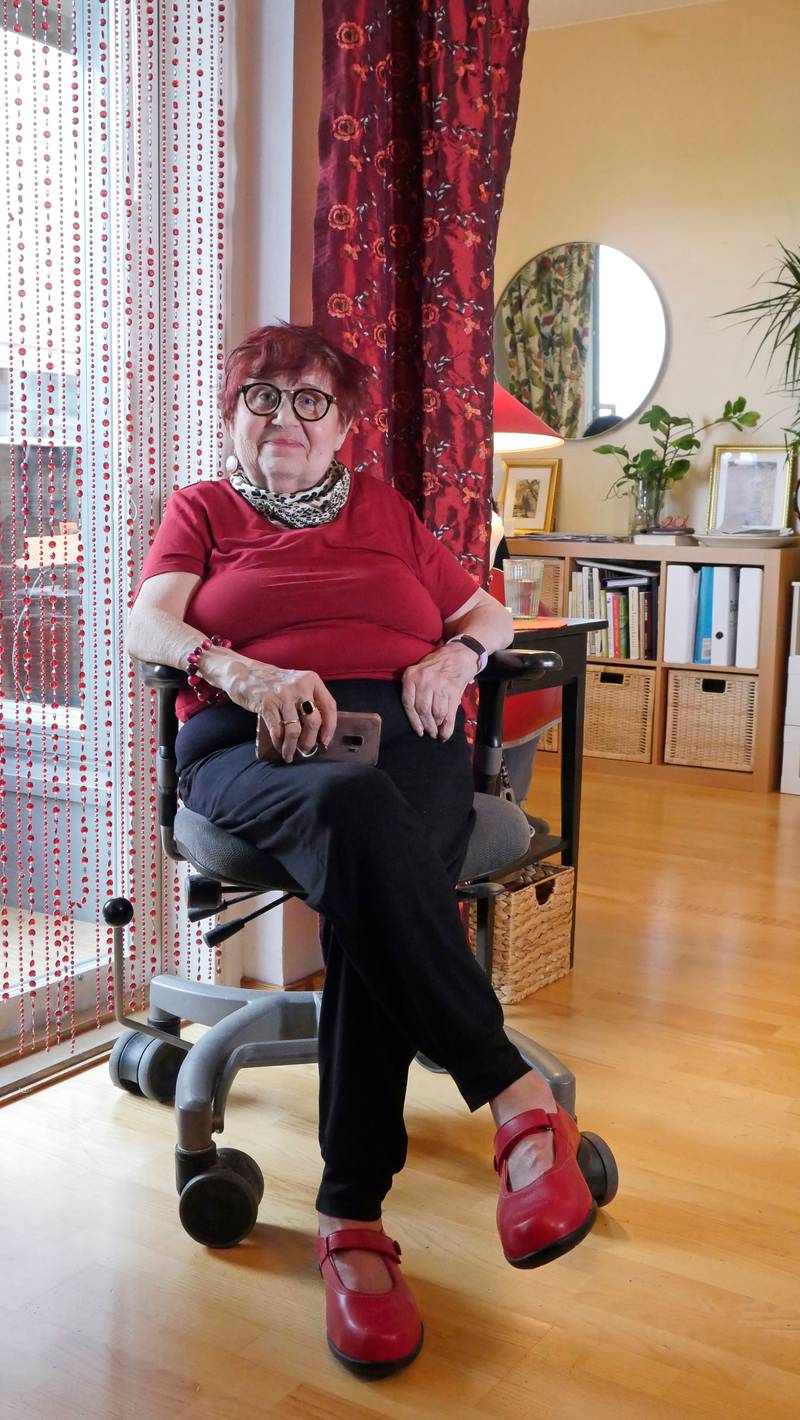

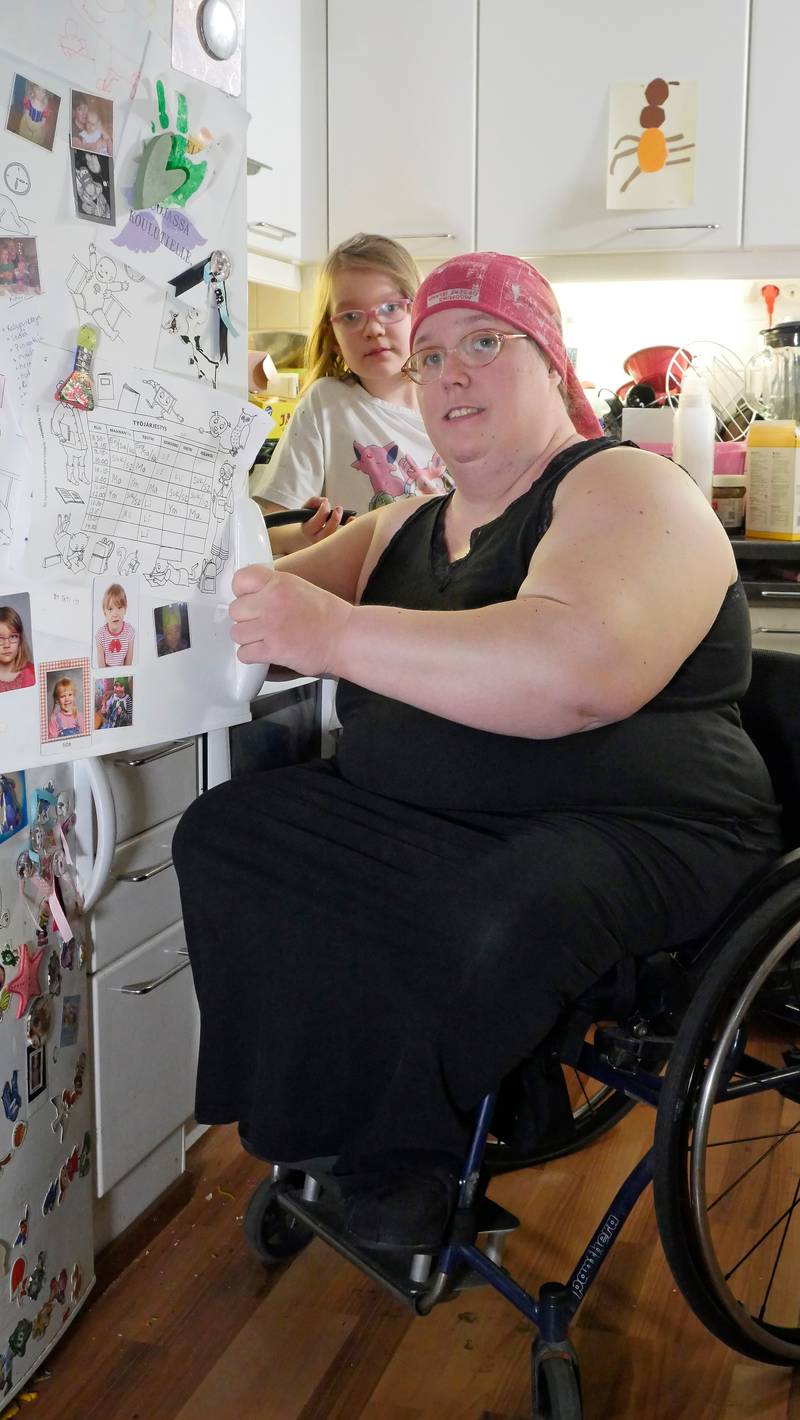

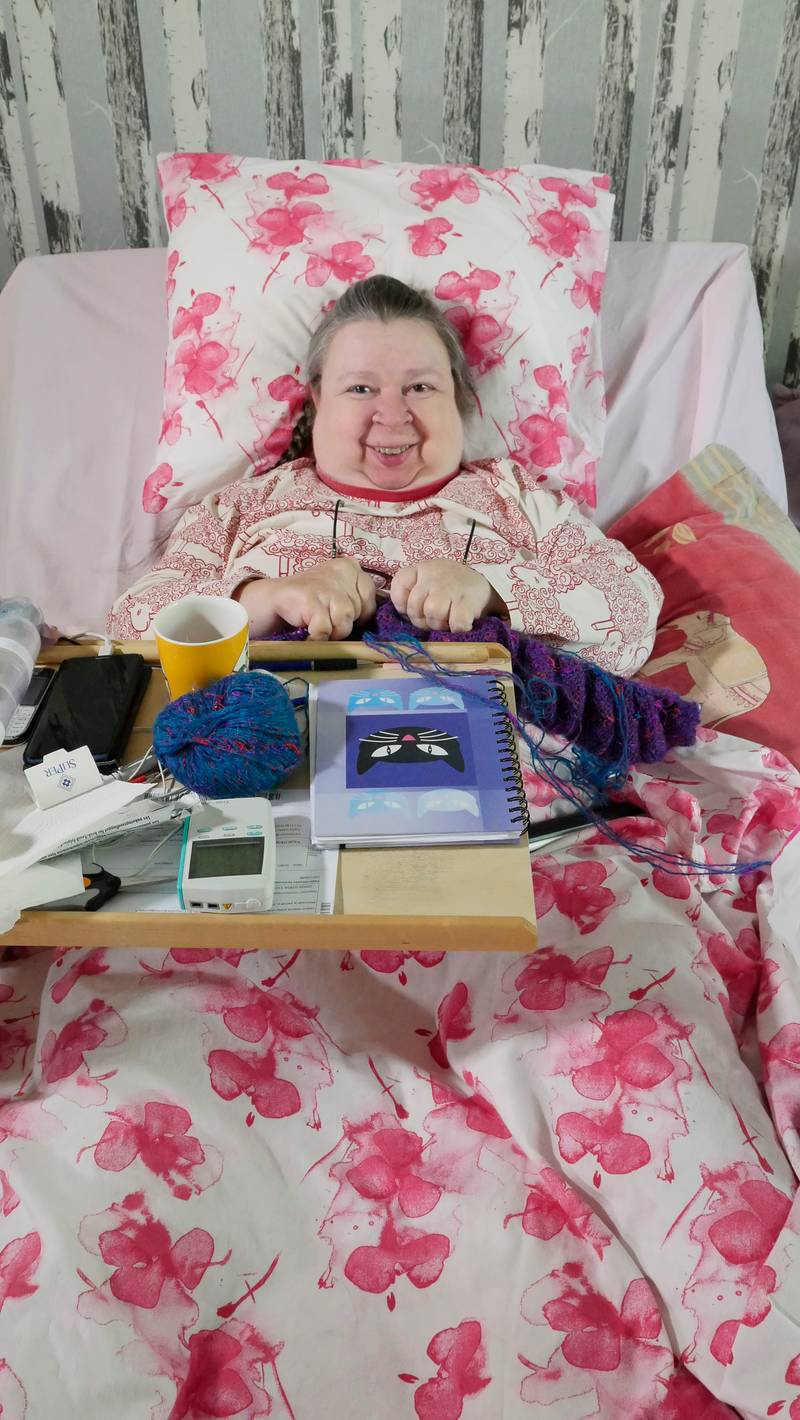

“Old Normal / Always Normal”, 2021. From the left: Leena Immonen, Petra Vuorela ja Iida, Sari Lehikoinen. The work consists of photographs and interviews. Photos: Jenni-Juulia Wallinheimo-Heimonen.
Yes, it feels like care can be rare to find outside the aesthetics. In society, it almost feels the opposite, as the labour of care does not get supported, and people are very lonely.
The situation is the same in Ukraine and other countries at war at the moment, where people living with disabilities and other minorities are not getting the same possibilities for escaping and getting shelter. I guess I am not allowed to say this, but the same fear is present in Finland for us as well. What would happen to us if Finland got involved in the war? I can not help but think that something has been done fundamentally wrong in the past - if the work that has been done is crumbling down in minutes”.
Before the pandemic, I did this work called Would You Watch My Mother for a Moment, which deals with family care (omaishoitaja) and its problems. Family care is silent labour often done by women. I always say that I am against the family care format. We need to love and take care of our families and people around us, but family care, the format itself, can be a trap. When you sign the papers for family care, you immediately drop out of certain forms of help from the healthcare system, and things become difficult. If a person in family care, for example, has to be in a hospital, they are directed home as soon as possible, as you have signed the papers of family care. In the mentioned work, I pushed a mobile hospital bed around the streets and asked people to look after my mother for a moment. It was a statement for long waiting queues and family care format”.
Family care is silent labour often done by women. I always say that I am against the family care format. We need to love and take care of our families and people around us, but family care, the format itself, can be a trap. When you sign the papers for family care, you immediately drop out of certain forms of help from the healthcare system, and things become difficult.


“Could you watch my Mom for a moment?”, 2019. Photo: Jenni-Juulia Wallinheimo-Heimonen
We need stronger voices and to be loud and aggressive like Kalle Könkkölä was. Even though we have lots of activists and loud voices, our opinions and worries are not heard without someone who can push things forward fiercely. Kalle used to run a little gallery at the Kynnys Ry (Threshold Association). He was also the first deputy to use a wheelchair and was a pioneer for many of us. He always pointed out the importance of the work of artists with disabilities in developing human rights. Happily, we have people who are actively working in the field of culture, people like Maija Karhunen, who is a performer, and dancer and working on the Kulttuuria kaikille (Culture for All) project, where they are currently working on the Making Space for Artistry project, which is focusing on equality for artists with disabilities and sign language users. Supported by the Kone Foundation, the project has launched the first residencies in Finland, specifically targeting artists with disabilities.
I also want to add that the grant and residency applications are much more accessible here in Canada. Help is offered for people who either do not speak English or French and those with dyslexia or other learning difficulties. In Finland, the applications have also gone in a much better and more accessible direction during the past years, significantly since the Kone Foundation has improved its accessibility massively.
The class issues, especially the poorness among women with disabilities, are strongly present in your artworks. How is the question of class living in your work?
Yes, I also identify as a poorness activist. I am dealing with socioeconomic positions and how people with disabilities are seen. I gave a talk in a panel discussion called The Future isn’t Soon Enough at the residency. I was asked to join the conversation with a provocative topic. So I brought up the idea of how the European Space Agency wants to cooperate with people with disabilities in the development of space travel5. Their vision responded to my years-long dream of how people could see our qualities as something positive. Something that could be seen as a real “superhero value” instead of seeing the strength of “living so-called normal lives” as heroic. When I first read about the project, I felt like, FINALLY, they need us for something! (laughter)”.
This kind of point of view awakens lots of strong feelings, and at the end of the panel discussion, a man stood up and started to throw images of homeless people living with disabilities toward us. He claimed that we did not give a shit and that people are dying in the streets, which is true and visible. Every day when I walk to the tram here (which is remarkably accessible, by the way), I see lots of tents and huts where homeless people live. These questions are not easy, and sometimes even discussions are impossible to form. I hoped that the discussion about distant extremes would have brought up a fruitful conversation, but it did not, and still, somehow, these two realities have to fit in the same universe.
My belief and a strong fear are that among the questions around disabilities, there is and will be more polarisation. People are so angry, tired and disappointed. This may mean powerful and great outcomes in the fields of culture, but on the other hand, it can also mean that people are increasingly retreating into their shells.
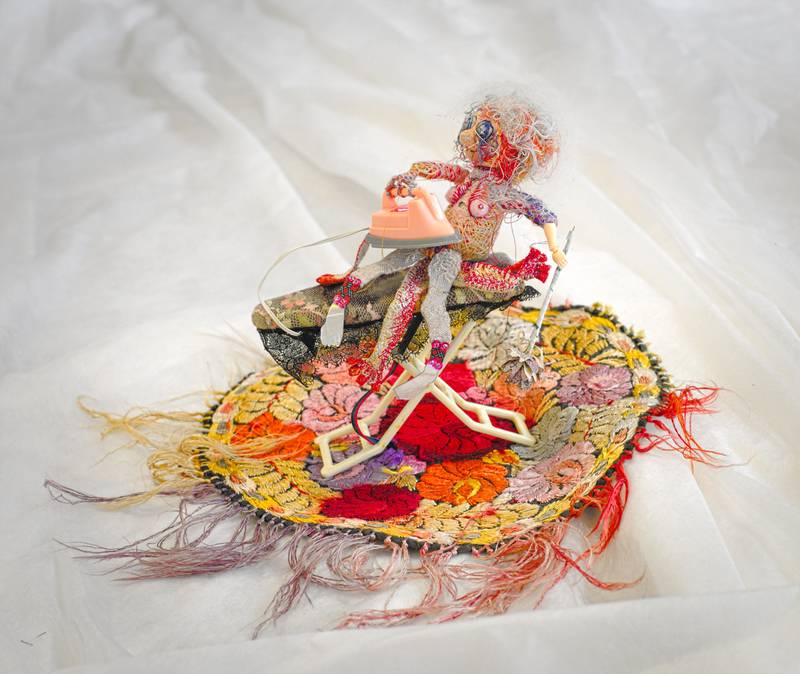

Violence against women with disabilities-table setting, Work in progress since 2013. Photo: Jenni-Juulia Wallinheimo-Heimonen
I wonder what will follow post-care? If I consider artists my age, I believe there is a strong “no future” feeling present and some sort of aesthetics of chaos. What do you think will happen for care as a theme?
My belief and a strong fear are that among the questions around disabilities, there is and will be more polarisation. People are so angry, tired and disappointed. This may mean powerful and great outcomes in the fields of culture, but on the other hand, it can also mean that people are increasingly retreating into their shells. There is an extensive discussion about the hate speech law in Finland right now, and it seems like disability issues do not fit into that discussion. This is how it often goes, and we need to work hard for things to change.
I want to thank Jenni-Juulia for the wonderful discussion and wish her a lovely time at the residency, where she continues to work until July 3rd. Currently, her works can be found in a summer exhibition, Art & Design Biennale 2022, in Fiskars until September 4th, at the Harbourfront Center until July 3rd and Kruunu, A Finnish Museum of Horology until October 23rd.
